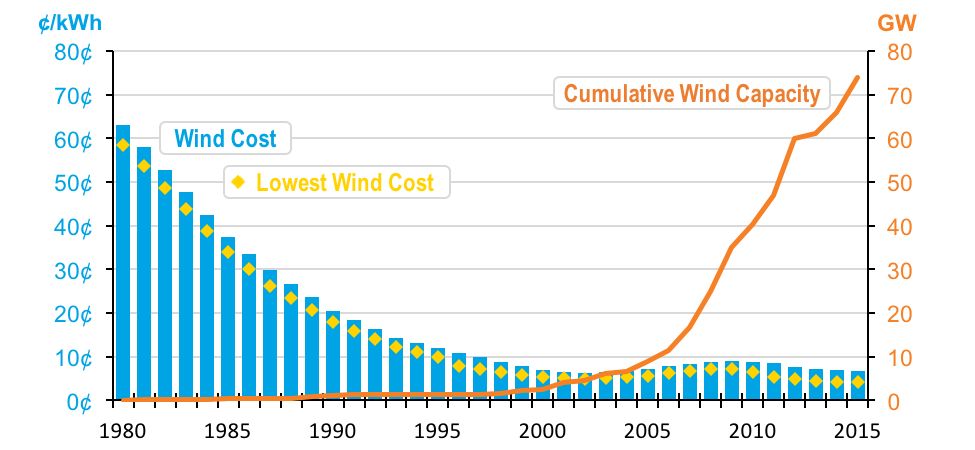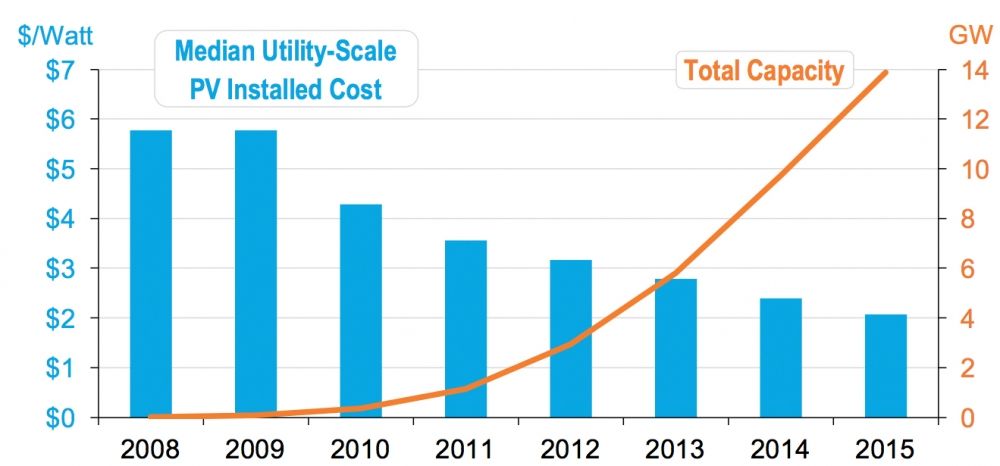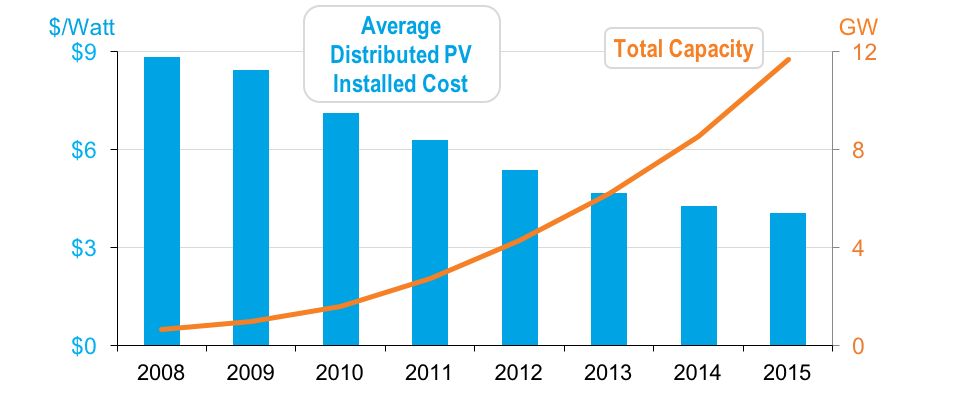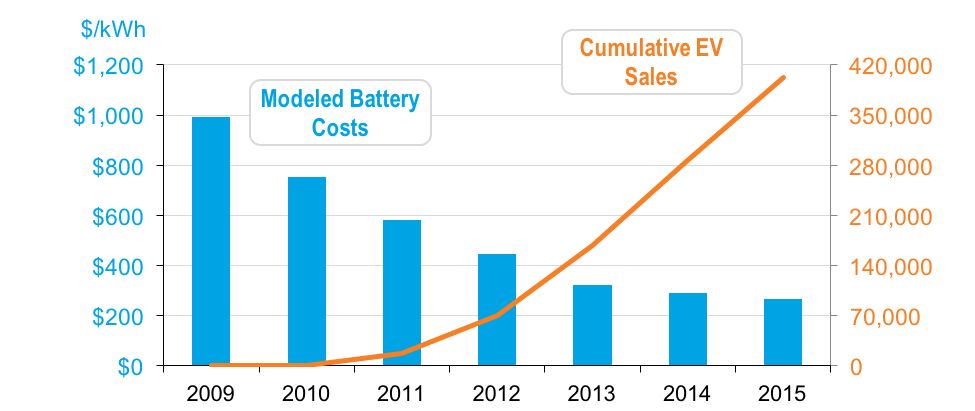The U.S. Department of Energy has declared that we are in the midst of a revolution toward a low-carbon economy. Just a few years ago, it was clear the adoption of wind, solar, LED lighting and electric vehicles was expanding rapidly, but now there is no turning back.
While the implementation of the Paris Agreement or the Clean Power Plan could strengthen and quicken the uptake of clean energy, prices have dropped so low that adoption is now increasingly based on economics, according to a new report from the DOE, 2015 Revolution… Now.

“We are experiencing a clean energy revolution in the United States," DOE Secretary Moniz said in a statement, “and this report confirms it.”
While wind, solar and LEDs are driving the clean energy economy today, more technologies are coming, especially in transportation.
Wind is poised to overtake hydropower as the pre-eminent form of carbon-free electricity in the U.S., according to the DOE. Prices have fallen as low as $0.02 per kilowatt-hour in some regions of the U.S. And while onshore wind will continue to grow with bigger, taller turbines, the U.S. is finally poised to enter the offshore market with the first offshore wind farm in the U.S. coming on-line soon off the coast of of Rhode Island. New York and Massachusetts have also issued offshore wind roadmaps recently.

Residential and utility-scale solar photovoltaic capacity has been rising steadily in the past five years, thanks to declining installation costs. This year is expected to be a banner year for utility PV installations, and 2017 will not be far behind. Residential solar is seeing evolving options for financing and costs that are could fall by another third by 2020, according to the DOE.


Perhaps no clean energy technology has seen a rise as meteoric as light-emitting diodes. Costs are down 94 percent since 2008. LED lights have overtaken the industry in just a few short years, and near dominance is coming, as the DOE expects LEDs will account for 85 percent of all lighting installations by 2035. The DOE has found that the efficiency of LEDs could still double again, but only with aggressive research and development.

Electric vehicle (EV) sales have been ticking up for years, but this clean energy technology is perhaps the one still sitting on the cusp of revolution. In 2008, the White House called for 1 million plug-in EVs by 2015. That goal was missed considerably, with about 400,000 EVs on U.S. roads in 2015.
Even with $2-per-gallon gas, sales are increasing as more EV options come to market. Still, for wider adoption, battery costs will need to come down even further, closer to $125 per kilowatt-hour or lower, a target the DOE expects to hit by 2022. Of course, industry already has more stringent goals. Tesla expects its Gigafactory to drop battery prices below $100 per kilowatt-hour, and General Motors expects battery cell costs to hit $100 per kilowatt-hour in 2022.

While the DOE expects the revolution to continue and strengthen in energy efficiency and clean energy generation, it also anticipates that more forces will join the fray, especially in transportation technology. The DOE is betting that advances in lightweighting materials, fuel cells and technology breakthroughs from its SuperTruck initiative will help bring transportation efficiency to the forefront of the clean energy revolution in coming years.



